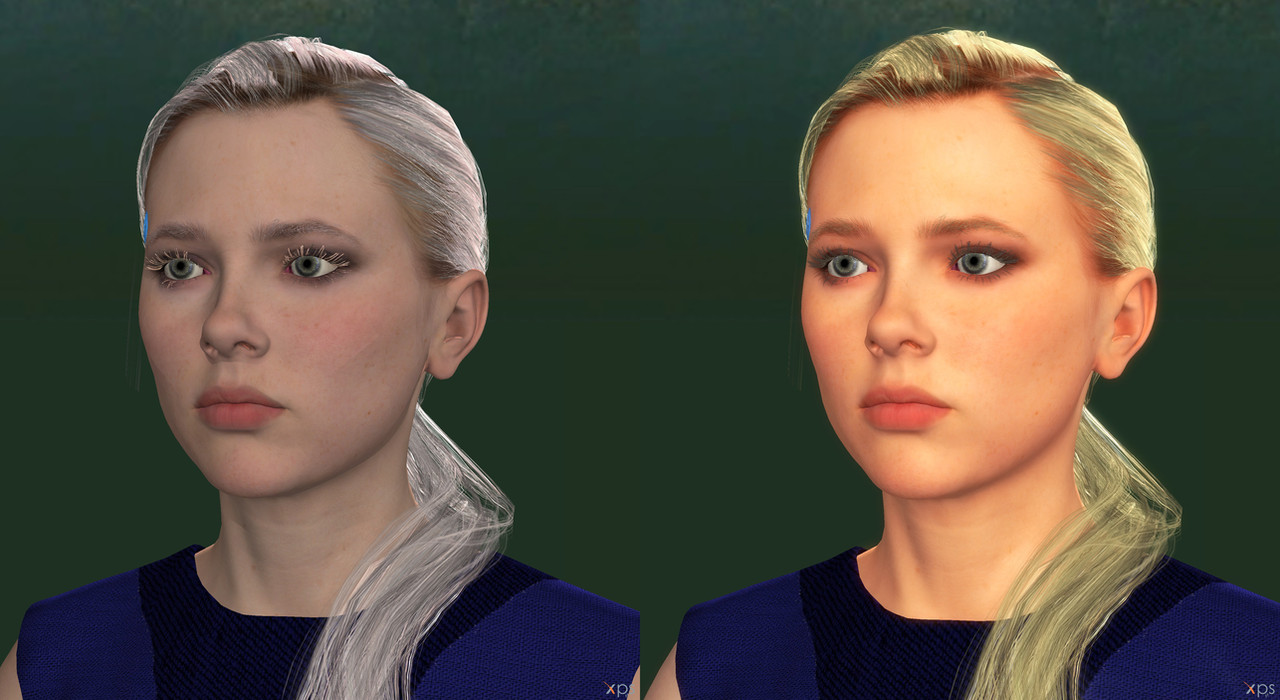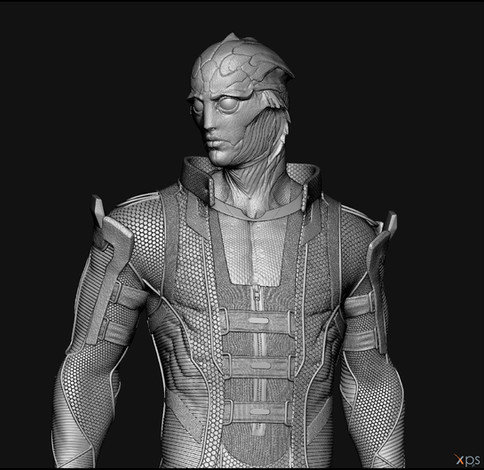HOME | DD
 XnaFreak — DBH Chloe before after SSS
XnaFreak — DBH Chloe before after SSS

#become #chloe #color #detroit #dress #female #human #scattering #sss #subsurface #xps #thedress #xnalara #what
Published: 2019-04-29 06:41:40 +0000 UTC; Views: 5265; Favourites: 18; Downloads: 54
Redirect to original
Description
If we study Rembrandt's paintings, he really only used about five glazes on his faces. If Rembrand can do photo-real skin in five layers, why can't CG? The SSS shader is nothing more than a layered shader!Human skin is really not that complicated.
Deep tissue, bone and muscle are part of (backface) scattering, but that is not part of the skin. It's actually only two parts: the epidermis and the subdermis.
XPS SubSurface Scattering (SSS ) map
Model: Detroit: Become Human - Chloe (Dress)
Sub-surface scattering is a technique that simulates the bouncing of light through translucent objects, such as skin. By combining a variety of texture maps to adress the specular, bump, and color of the various dermal layers, we can get pretty good looking skin. A SSS shader do not scattering photons below the skin surface. The shader just simulate the effect. The SSS map channels, that's where the scatter light is stored, to make things look reasonable, down to a poor level, not lookk scientifically accurate.
Human skin is really not that complicated.
"A Practical Model for Subsurface Light Transport" by Henrik Wann Jensen at SIGGRAPH 2001
Differences in human colour perceptionif light penetrates the surface of a translucent object, is scattered by interacting with the material, and exits the surface at a different point.
An inherent property of semitransparent materials is absorption. The further through the material light travels, the greater the proportion absorbed.
Human skin has three major parts: epidermis; subdermis; and subcutaneous.
Absorption and scattering are wavelength dependent!
The outer layer is the epidermis. There is no blood in this layer, and it is semi-translucent. It filters out most of the blue and some of the red light, resulting in a pale straw color.
As we go deeper, more of the short wavelength (green and blue) light is lost.
The Subdermal layer contains blood vessels. Only the long wavelength red light can penetrate this deeply.
To simulate the light scattering properties of skin, the mental ray Fast SSS Skin shader adds scattered light from three layers to surface shader components. The SSS components are the epidermis, subdermis and backscatter (light penetrating all the way through the skin).
Simple Scattering Approximations
Related content
Comments: 2

Interesting. I hardly ever use SSS with Blender because it slows down the rendering process and it can cause a few bugs with the lights. I try to focus a lot more on front/back lighting so that the skin doesn't appear too shallow. SSS is great for rendering highly detailed pictures like close-up portraits.
👍: 0 ⏩: 1

That's right.
You can also blend the "Blood map" from my Normal Map Tool , using "blend mode add" in photoshop, to the "diffuse map".
👍: 0 ⏩: 0
























